This fine dining restaurant is set on the first floor of a historic Munich townhouse, built in 1552 and once the city chancery. Tohru, named after its owner Tohru Nakamura, opened in 2020, the cuisine reflecting the diverse culinary influences of his Japanese father and German mother. The dining room is accessed up a steep flight of stairs (normally there is a lift, but this was out of action tonight), with a more casual sister restaurant underneath at street level. The building is tucked away in a pedestrianised street situated just behind the large Dallmayr department store in central Munich. Mr Nakamura previously worked at Geisels Werneckhof, and his restaurant provides a tasting menu only experience, with the menu priced at €280. The dining room has large, well-spaced and individually illuminated tables split into three room sections, the room having terracotta walls and a brown carpet. As this is a historic building there is no air conditioning, but the staff opened the windows on this warm summer night. In the 2023 guide Tohru had two Michelin stars.
The wine list had 280 labels and ranged in price from €40 to €2,300, with a median price of €139 and an average markup to retail price of 2.5 times, which is considerably lower than you would see in London. Sample references were Saalwachter Silvaner Alte Reben 2020 at €42 for a bottle that you can find in the high street for €18, I Custodi Pistus Etna Rosso 2019 at €65 compared to its retail price of €31, and the lovely Maximin Grunhaus Herrenberg GG 2021 at €99 for a wine that will set you back €38 in the high street. For those with the means there was La Chiuse Brunello di Montalcino 2012 at €289 compared to its retail price of €95, and Chateau La Mission Haut Brion 1986 at €655 for a wine whose current market value is €427.
The first dish was a pair of blue mussels served in their shell, with fennel salad, pieces of razor clam and a vinaigrette of red rice wine vinegar. The shellfish was of a high standard and the vinaigrette was carefully balanced, just sharp enough to work nicely with the mussels (16/20). Alongside was a pani puri filled with tiny red prawns, butter and cured egg yolk. This was pleasant, though for me less satisfying than the mussel and clams. Since it was an Indian dish, I would have expected a little more spice (whatever spice there may have been was subtle to the point of invisibility), and the pani puri is traditionally lighter and crisper than this, though the little prawns themselves were good (barely 15/20).
Red mullet was initially fried in tempura style and then marinated in mirin, served with Jerusalem artichoke, green asparagus from Bavaria and tartare of Balfego bluefin tuna from the Mediterranean that had been rolled in poppy seeds, garnished with a little cherry blossom. Both fish were excellent, and the pickling juices from the marinade provided just the right level of sharpness to cut through the richness of the tuna (17/20).
Nanatsuboshi rice is from Hokkaido and this particular one recently won a competition as be8ng the best in Japan. This was used as a base for salmon trout marinated in shio koji, Royal Belgian caviar, buckwheat, thin leaves of noir and a little ginger. I liked the delicate nori, and the ginger went well to enliven the salmon trout, which is never the most thrilling of fish. However, the much-heralded rice itself emerged quite hard and seemed rather dry if I compare it to the best sushi rice I have eaten in Japan. I presume this was some effect that was intentional but for me it did not entirely work (14/20).
Things got back on track with sashimi of yellowtail (hamachi) from Portugal, both the lean part of the flesh and the fattier belly of the fish being presented. This came with little pieces of Mexican cucumber, yoghurt enlivened with yuzu koshu (a Japanese condiment involving fermented chilli pepper, yuzu peel and salt) and a vinaigrette of cucumber and cumin. The hamachi itself had silky texture and excellent flavour, and the gentle spice from the condiment nicely lifted the flavour of the dish, the cucumber providing a pleasant contrasting taste (18/20).
Next was Bavarian char, caught about an hour from Munich, that was cured in salt, sugar and sake. This was served with black radish, shiso, kohlrabi (German turnip), myoga (Japanese ginger) and a dressing of hibiscus and ponzu. The fish had been sliced into discs and was served as a cylinder, the fish alternating with discs of the vegetables, which provided a pleasing textural contrast to each bite, the excellent char being enhanced by the gentle bite of the ginger. This was a really successful and clever dish (18/20).
At this stage there was a bread course, but this was a far cry from a bread roll. One of the oldest bakeries in Germany is called Arnd Erbel in Nuremberg, their sourdough here topped with tartare of the highest A5 grade wagyu from Miyazaki, garnished with bonito flakes and yuzu, along with maitake mushrooms that had been blowtorched in brown butter, a touch of sansho pepper and finished with a chive oil sauce. This was a kind of ultimate comfort food, with the rich and quite fatty beef nicely counterbalanced by the acidity of the yuzu and the earthy woodland flavour of the mushrooms, all brought together on the excellent bread (18/20).
Turbot from a roughly 6kg medium sized specimen was grilled and served with white asparagus that had been cooked with the remains of a sake fermentation process, along with asparagus veloute, baby broad beans and a little oil of rocket. The fish had very good flavour and the white asparagus was lovely, as were the little beans (17/20). Eel from the Netherlands was served with carrot, kombu (edible kelp), aubergine and onion, all resting in a dashi broth. The broth had a very clean flavour and the eel went well with the vegetables, though I wonder whether the eel really benefited from being soaked in the broth (16/20).
Bavarian lamb was cured and soaked in buttermilk, then grilled over binchotan charcoal. This was served with confit and grilled turnip, aspic, little broad beans and a pair of sauces. One was a classic lamb jus reduction of the cooking juices, the other a sauce of Japanese mustard. I thought that the latter in particular was a clever idea, the bite from the mustard nicely cutting through the richness of the lamb, the turnip providing an earthy contrast (17/20).
Kakigori is a traditional very light Japanese dessert, basically flavoured shaved ice. In this case rhubarb was the main flavour, along with Japanese plum sabayon, syrup of blackcurrant, seaweed and milk. This was light and refreshing as a pre dessert (16/20). The dessert was a praline of strawberry, kombu and matcha. This worked better than I expected, with the matcha restrained and the strawberries having lovely flavour (16/20). Finally, there was a kind of pancake of red beans with confit yuzu that in some way resembled a cheesecake, the sharpness of the yuzu enlivening the sweet red beans (15/20). The final dessert was a banana one, with toffee dipped in banana liqueur, with sorbet of coriander and cumin, and a rum sauce with lemongrass, ginger and lime. This was an unusual combination of flavours that actually worked a lot better than I expected, with even the herbal sorbet being quite effective in this dish (16/20).
The staff were delightful, our waitress Julia being particularly attentive, knowledgeable, patient and thoughtful. This will not be a rapid experience by the way, our meal taking four hours from start to finish. I was unable to obtain a bill for the meal, so just left a tip for the staff in cash. However, if you shared a modest bottle of wine then a typical cost per person might be around €330 (£288). Tohru serves very well-crafted dishes reflecting the multi-cultural background of its chef. If you are looking for a Japanese tasting menu experience in Munich then this is the place to come.




















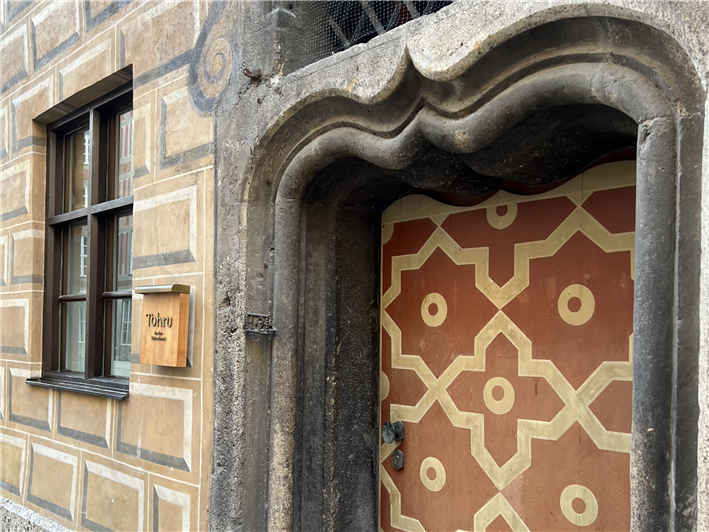

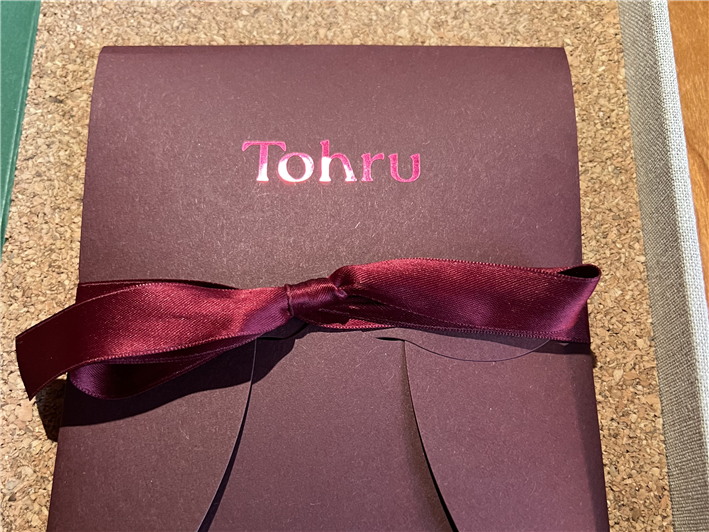
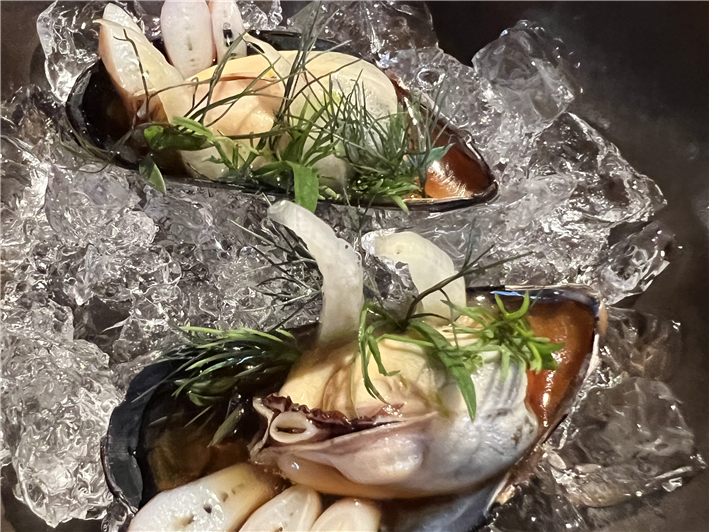
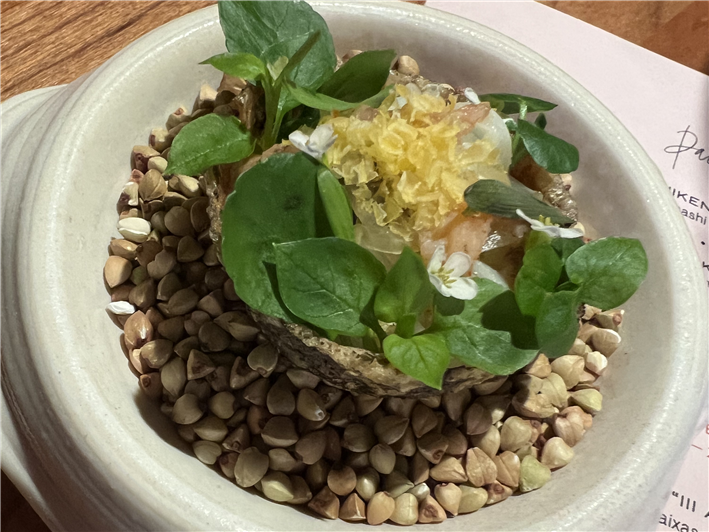

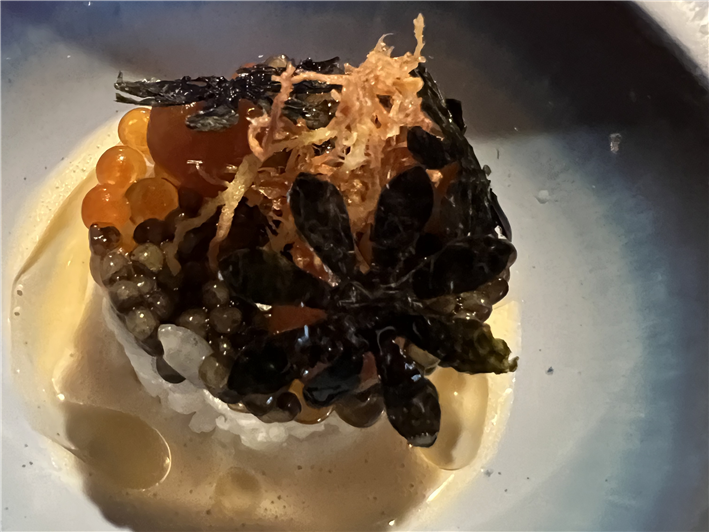
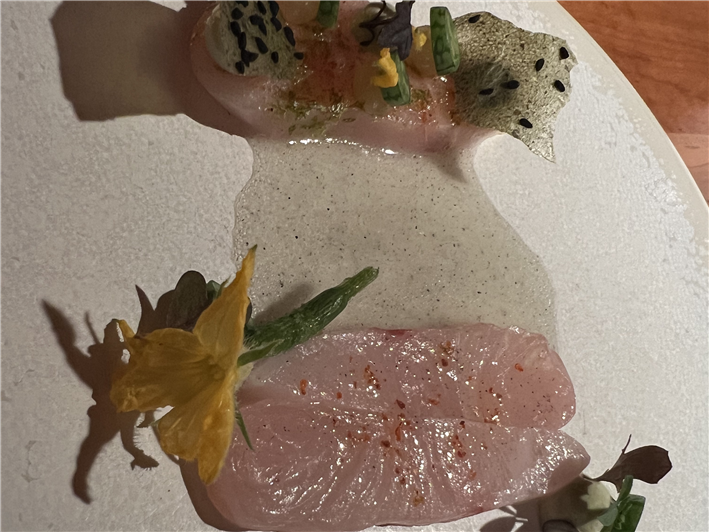
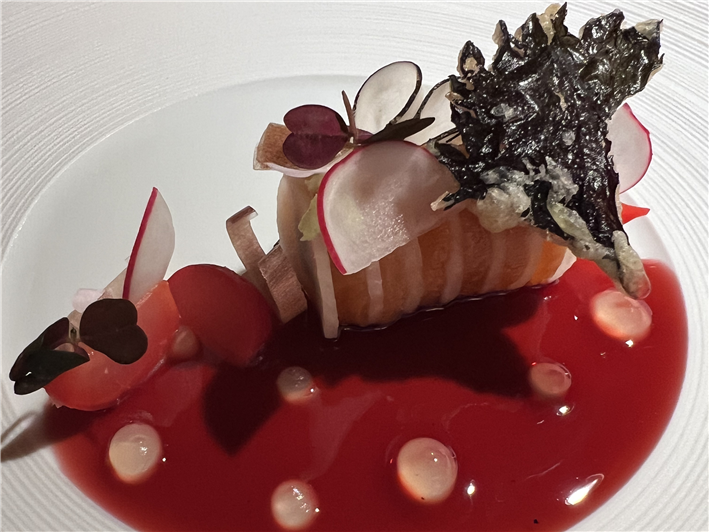
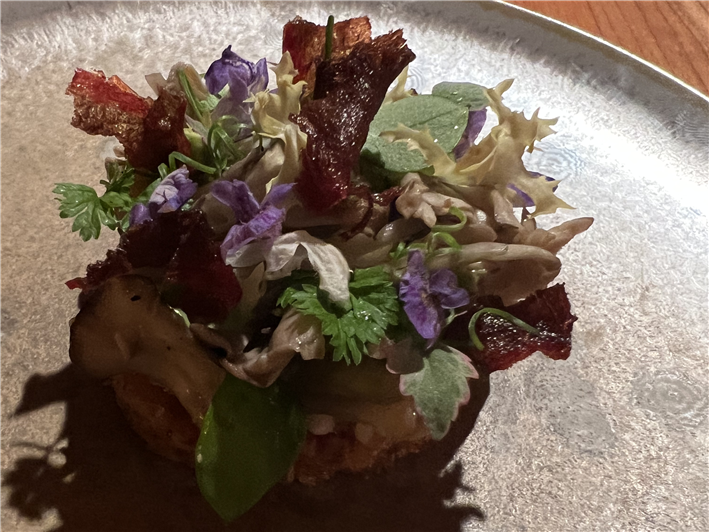


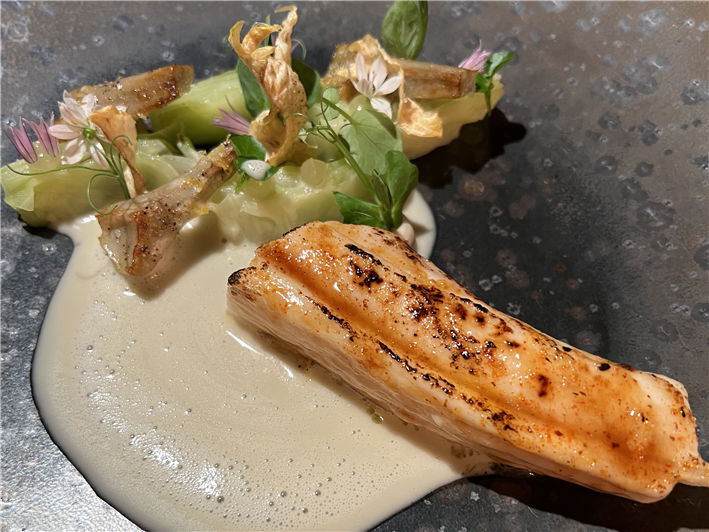
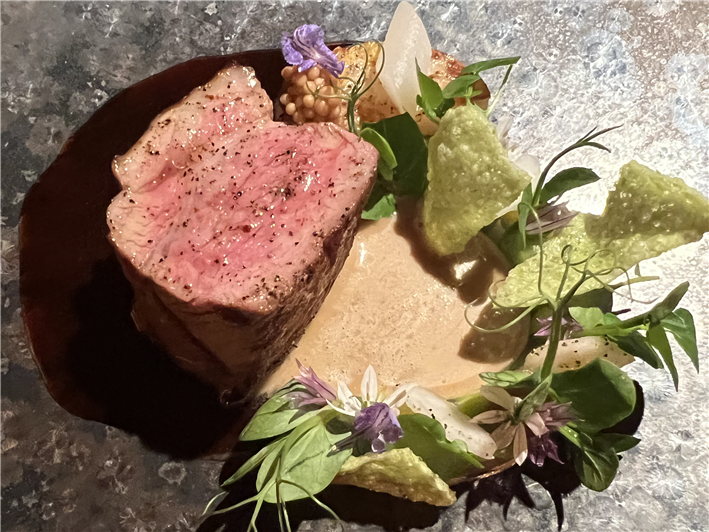
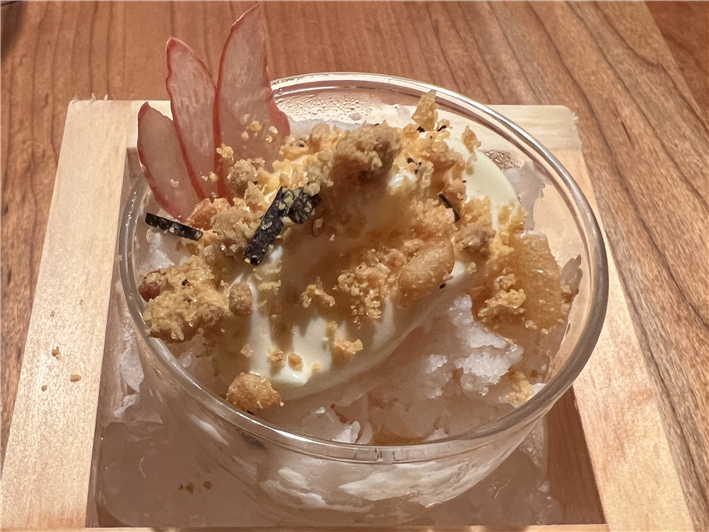
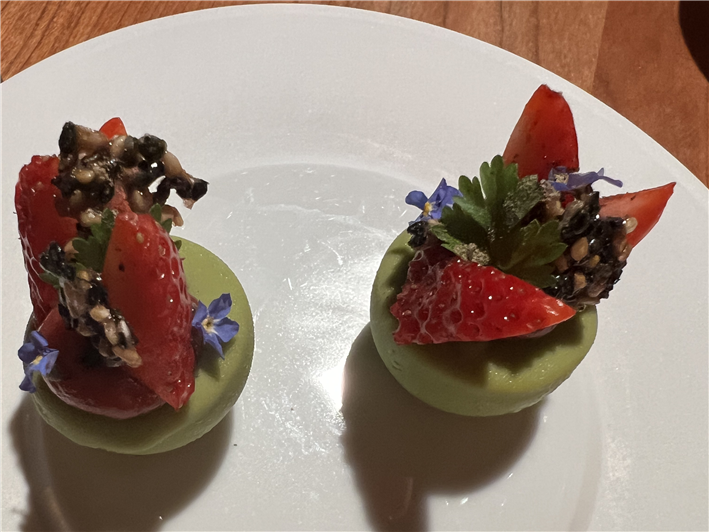

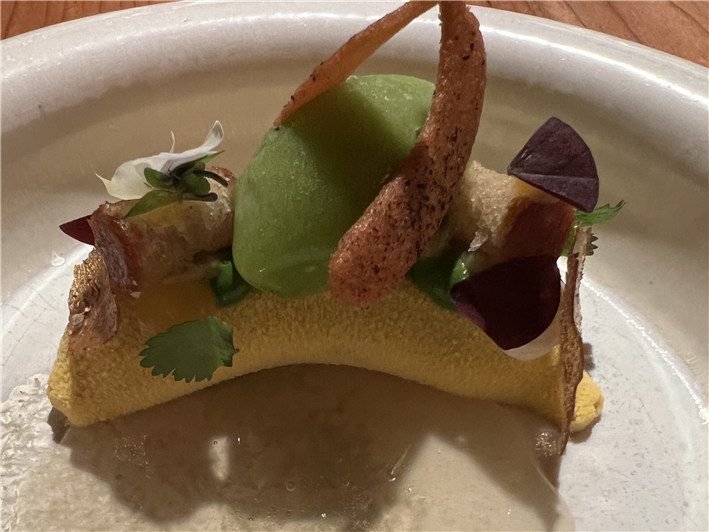


Add a comment
Thank you for submitting your comment, this will be checked and added to the website very soon.
User comments